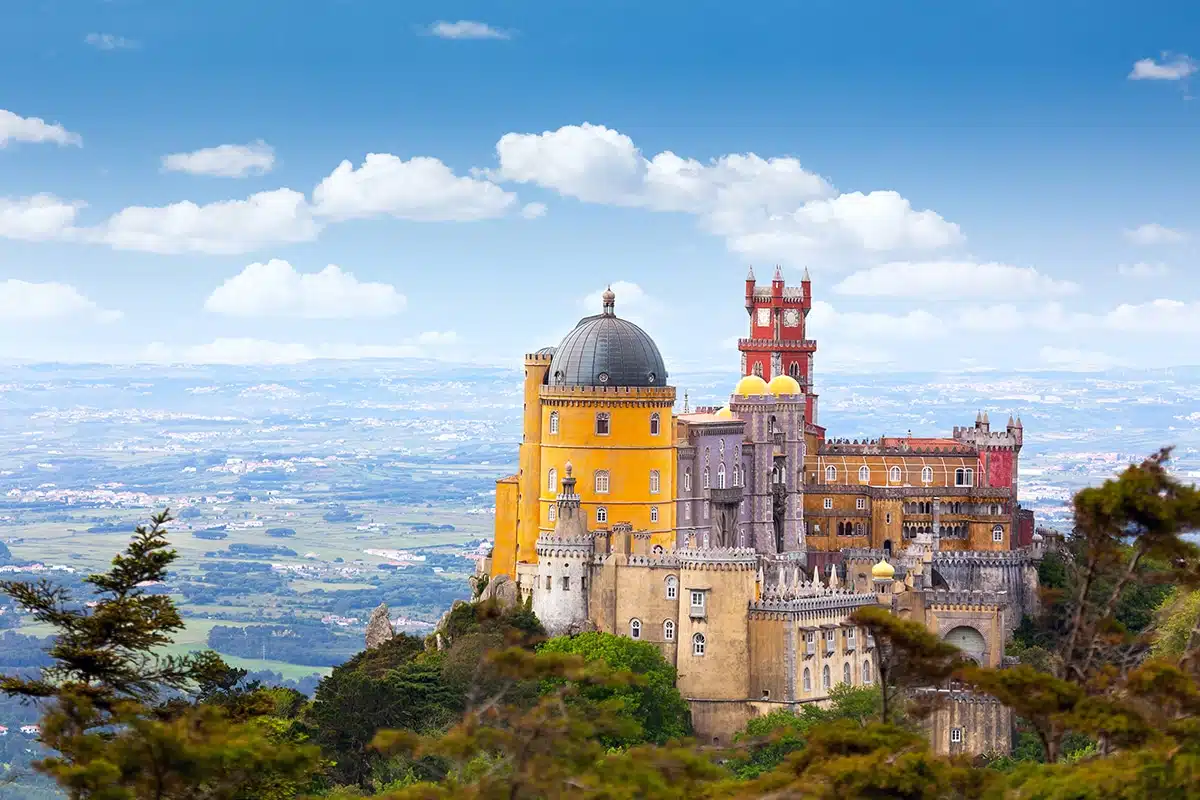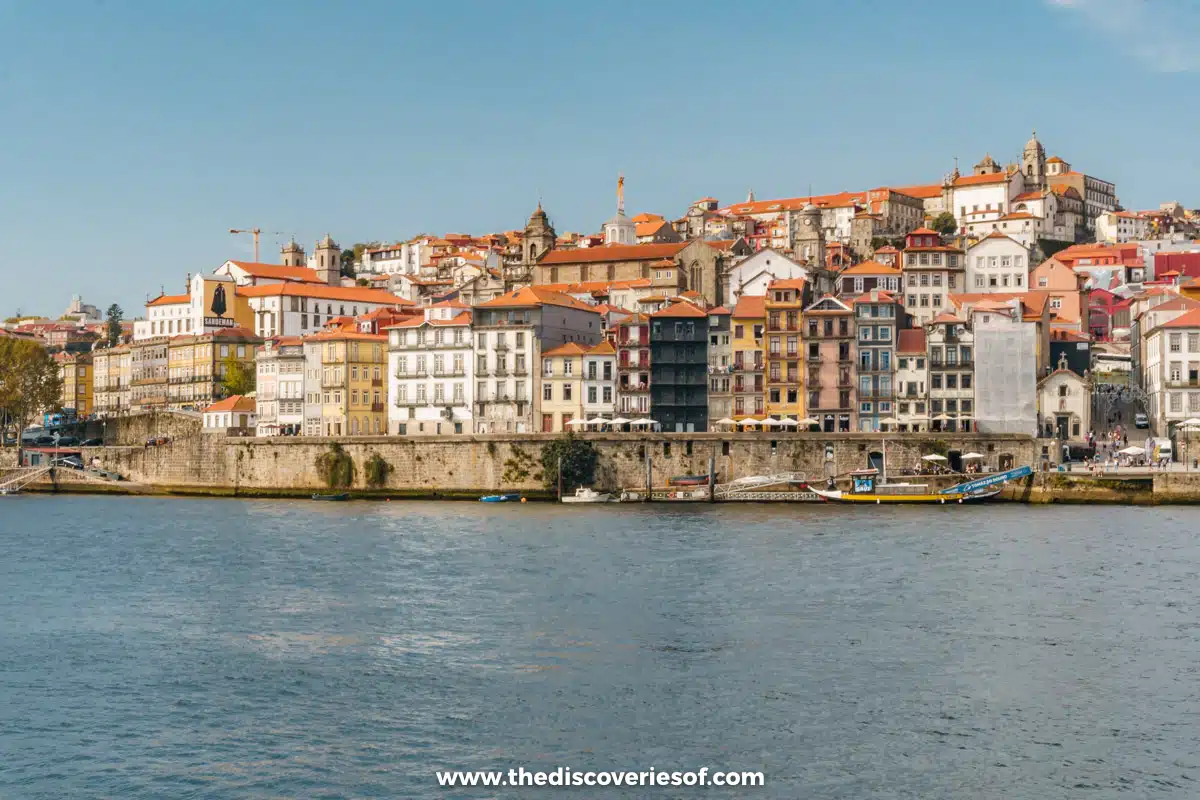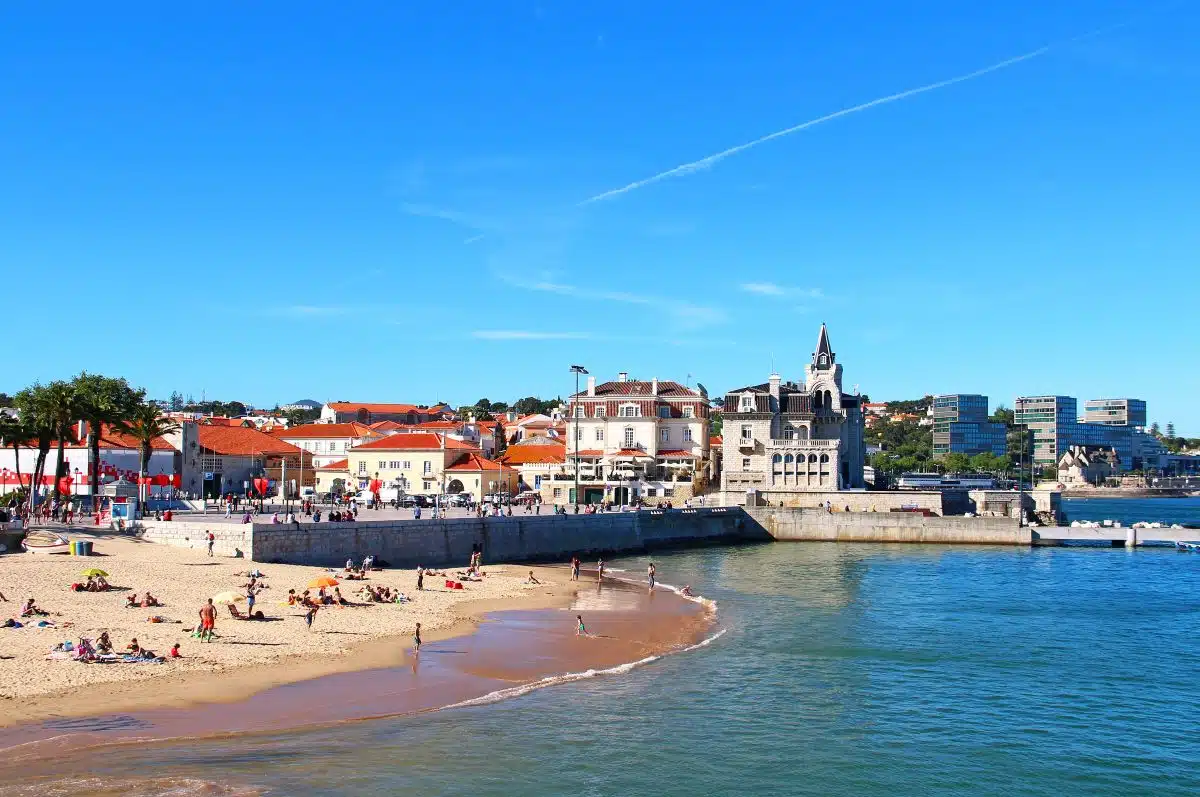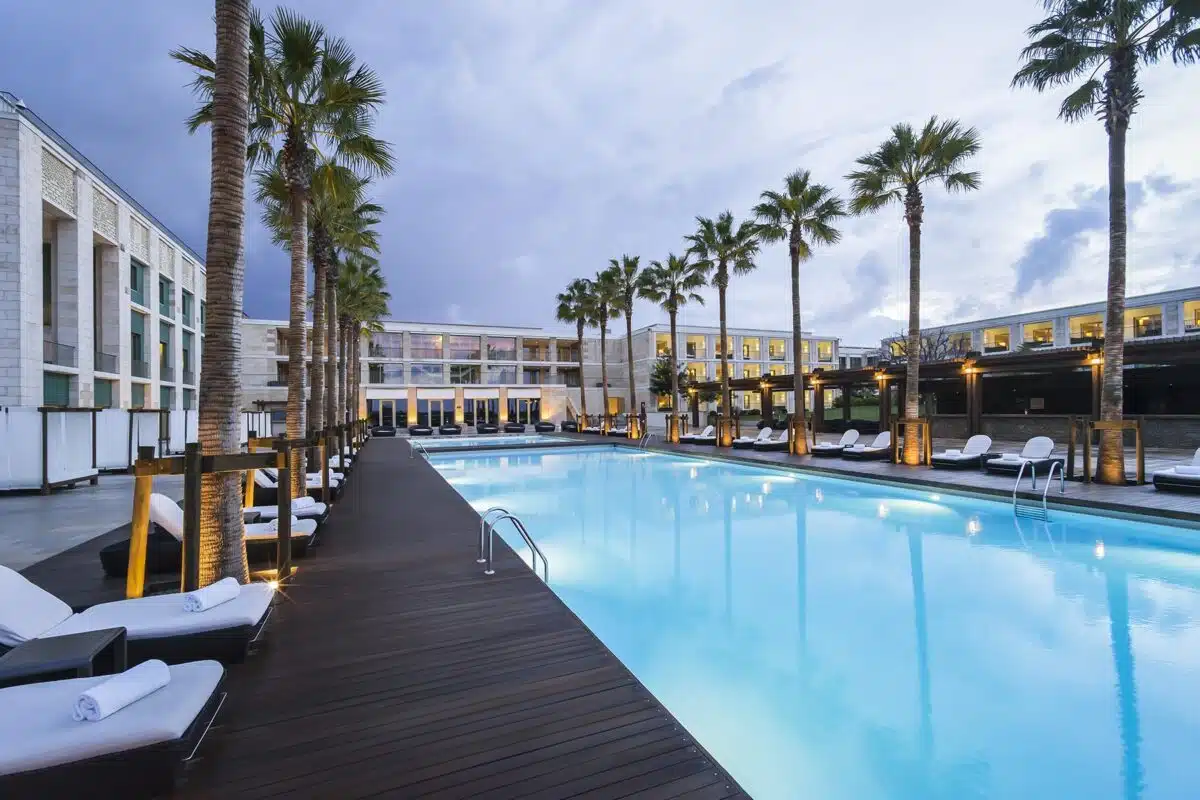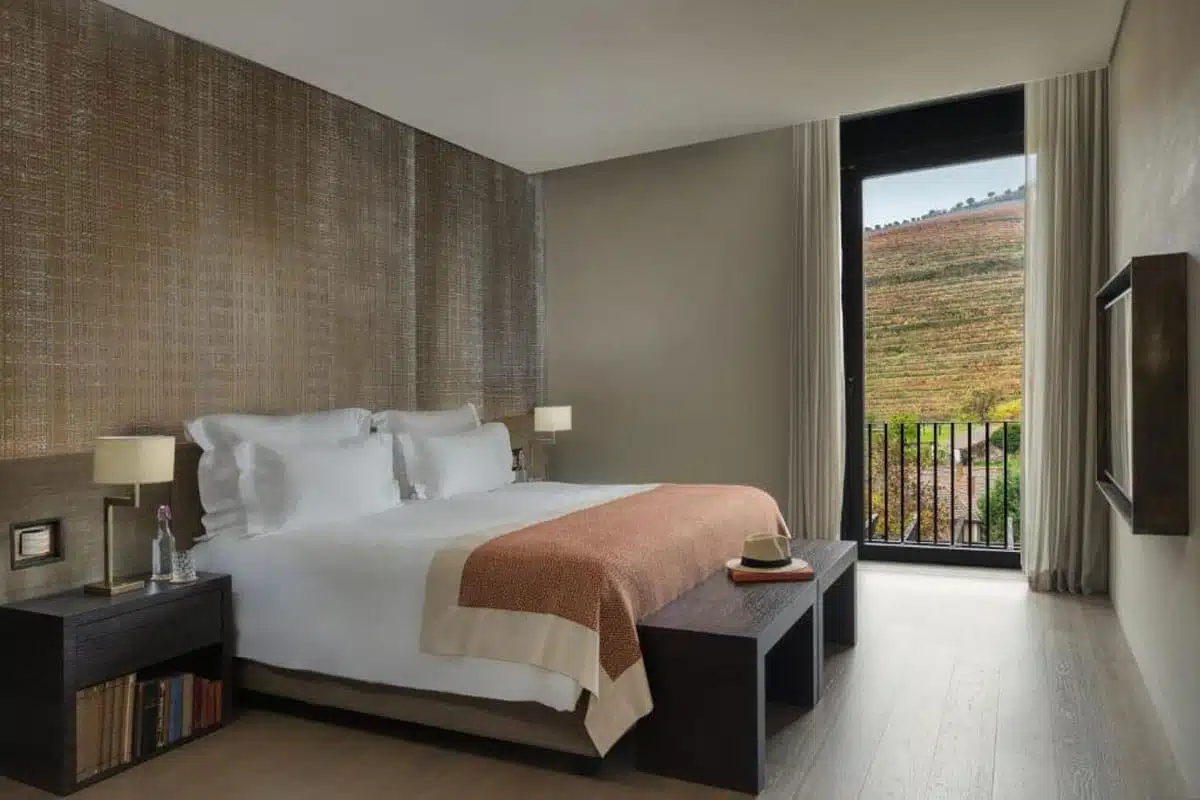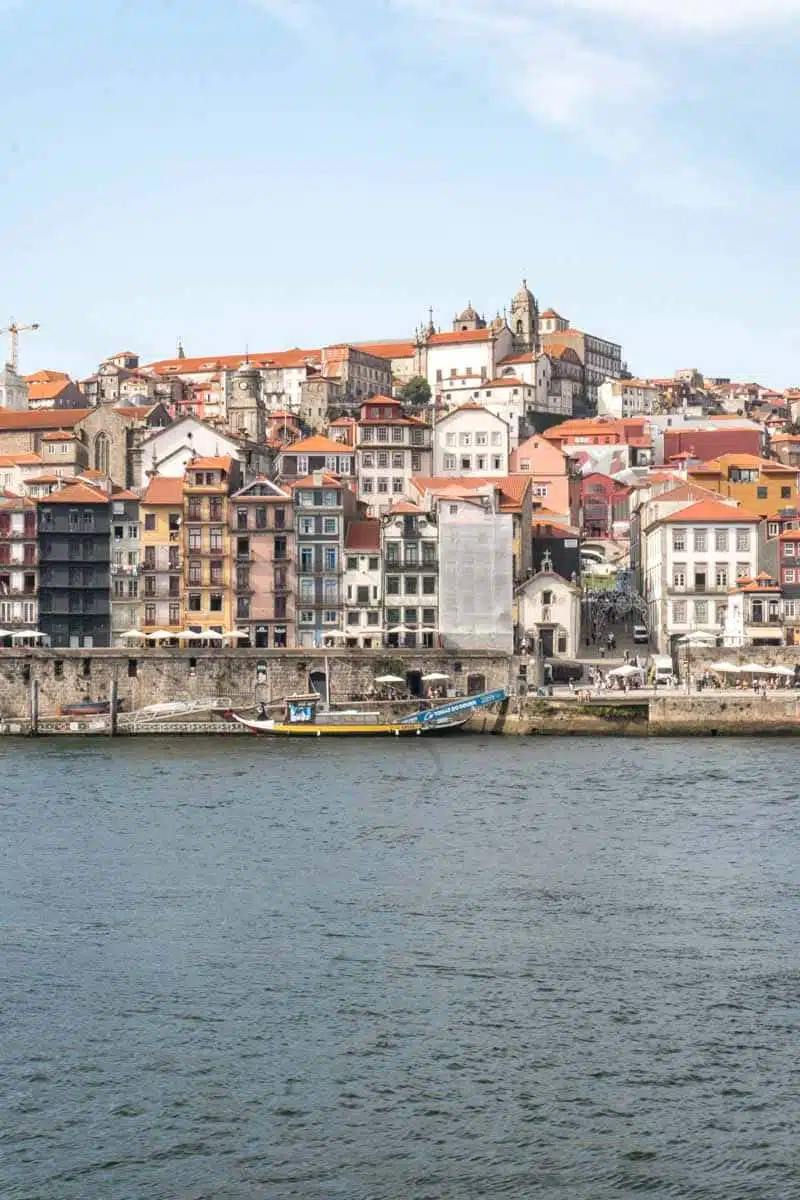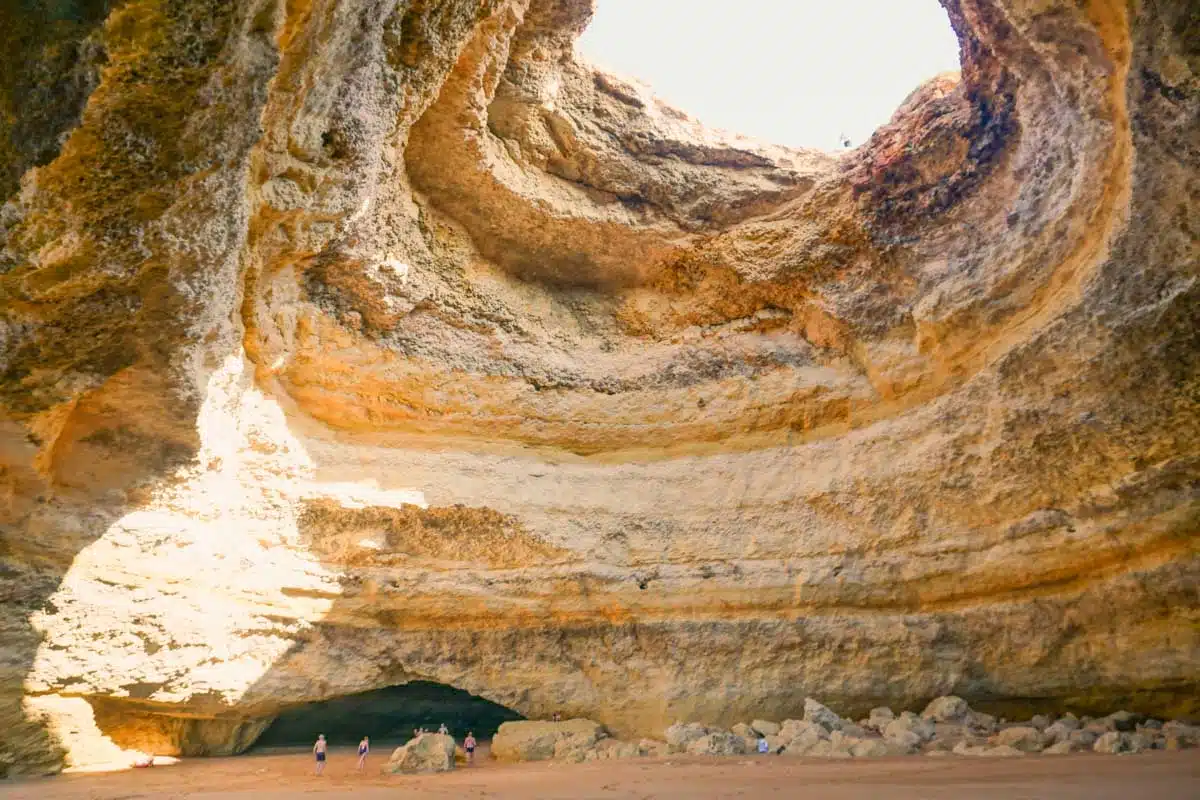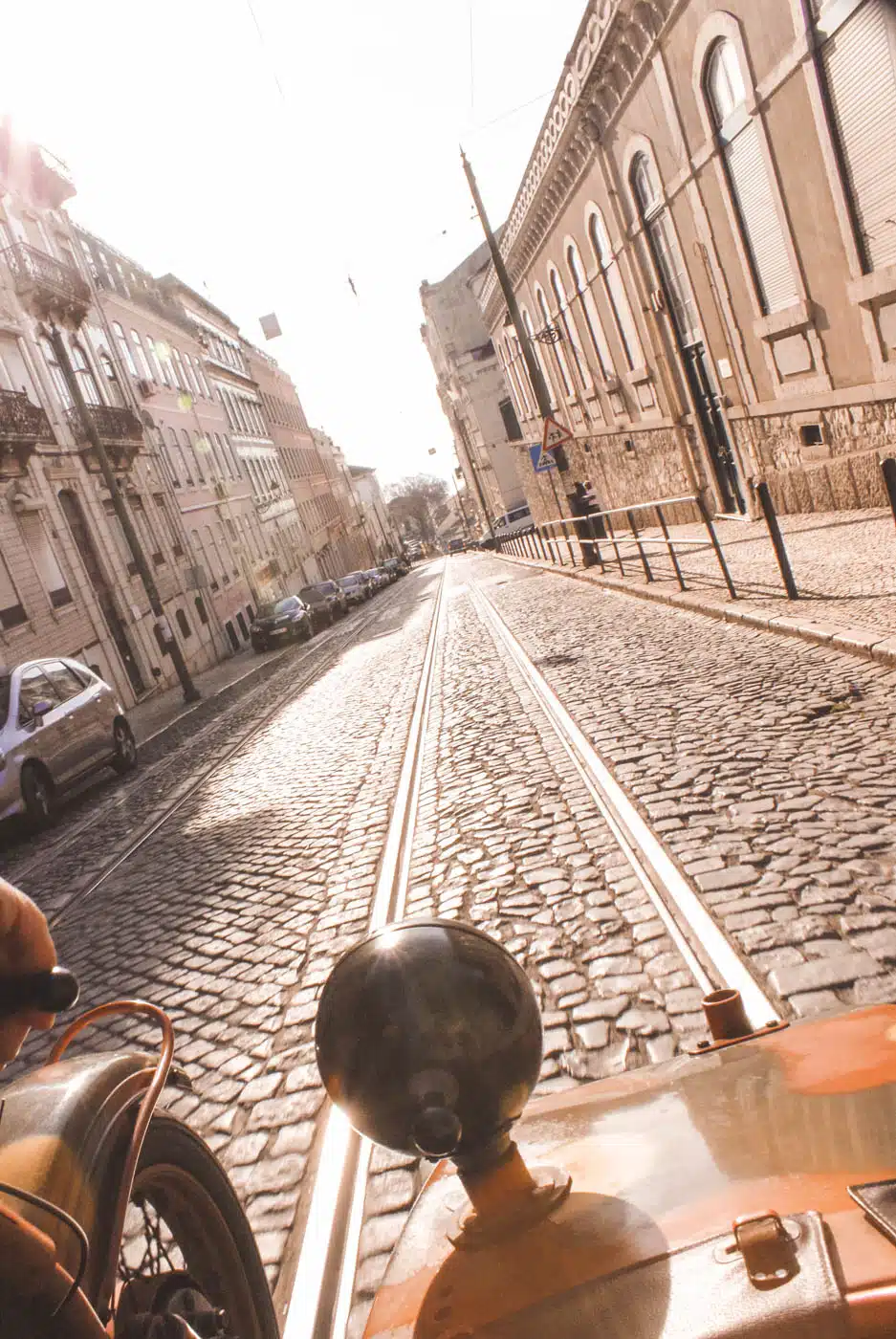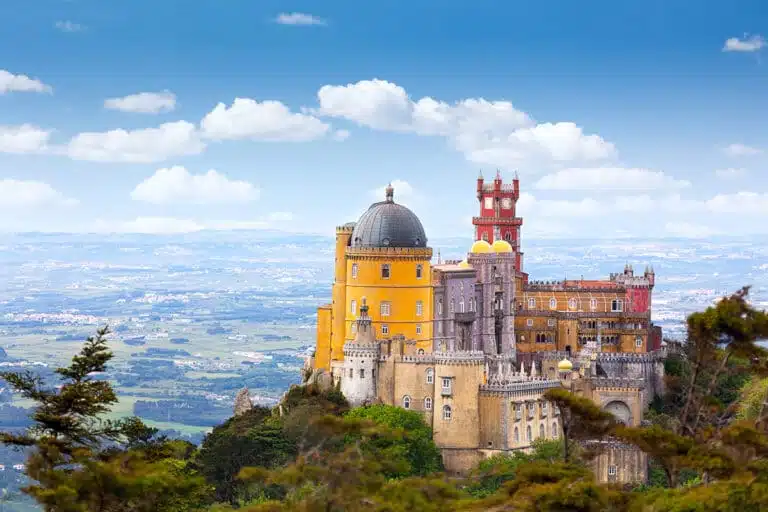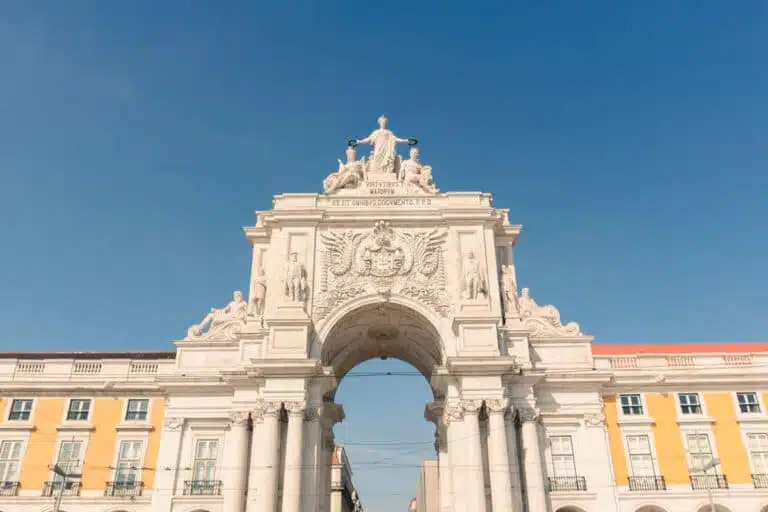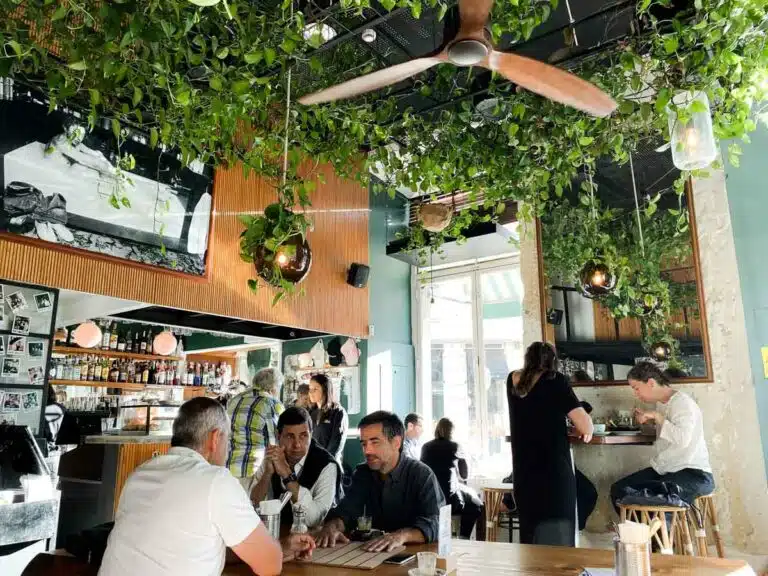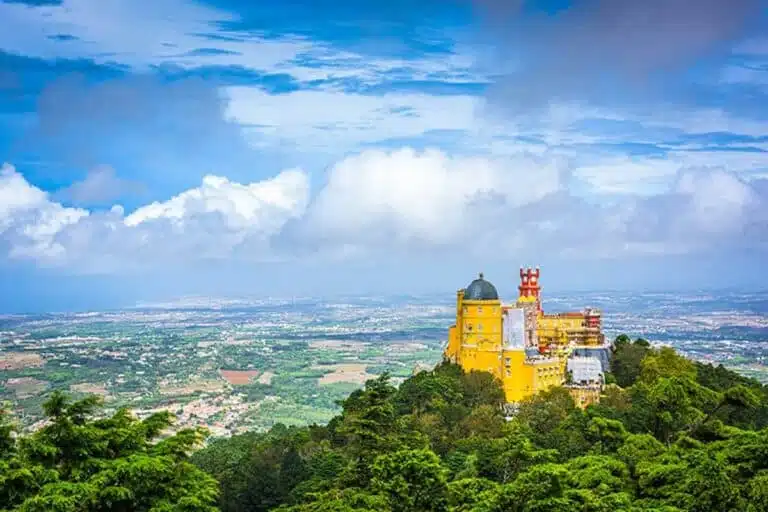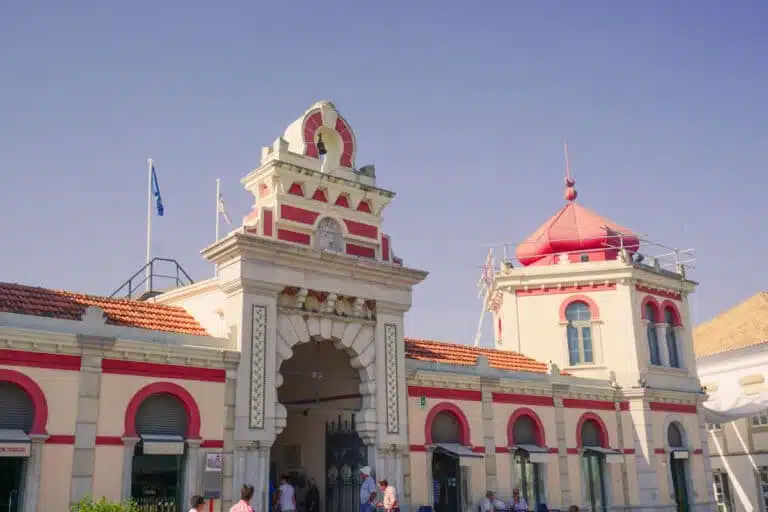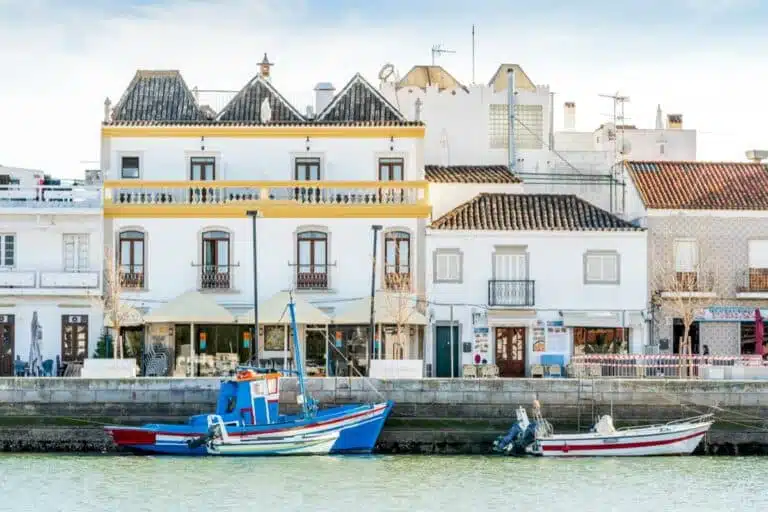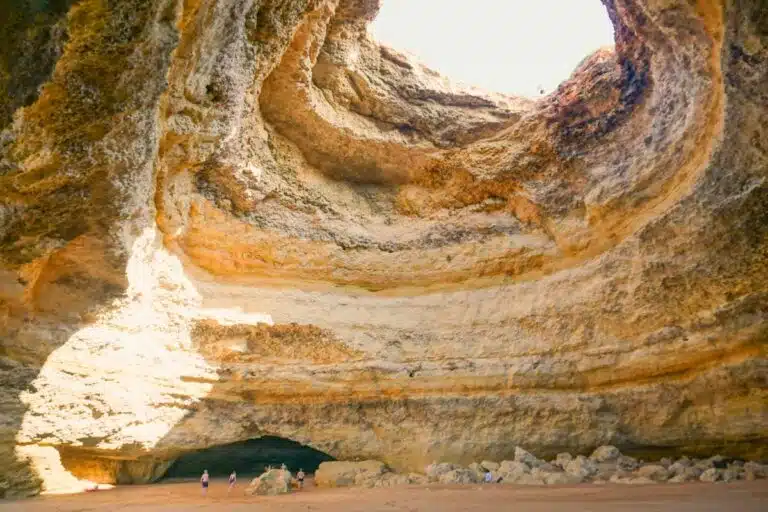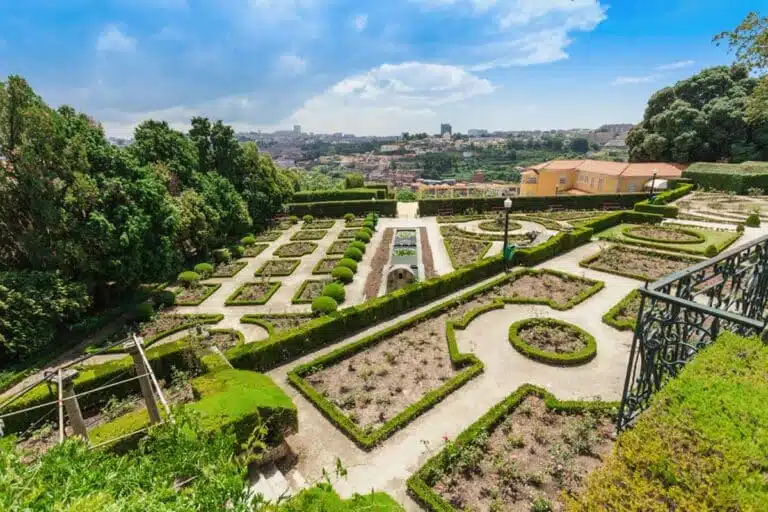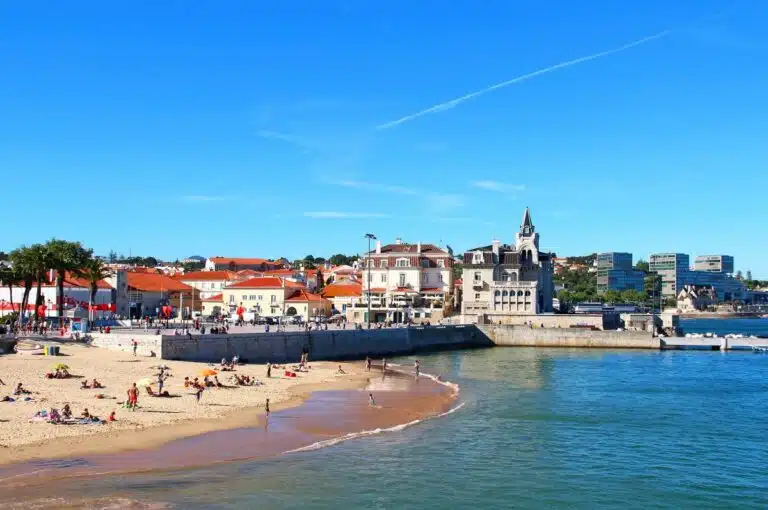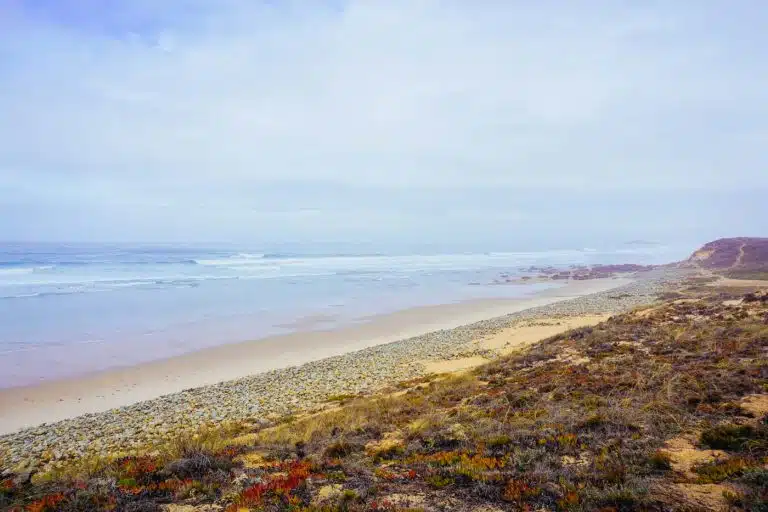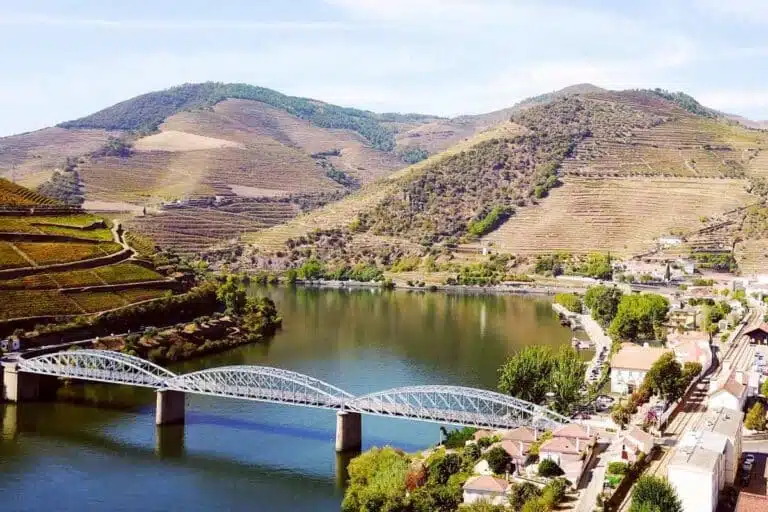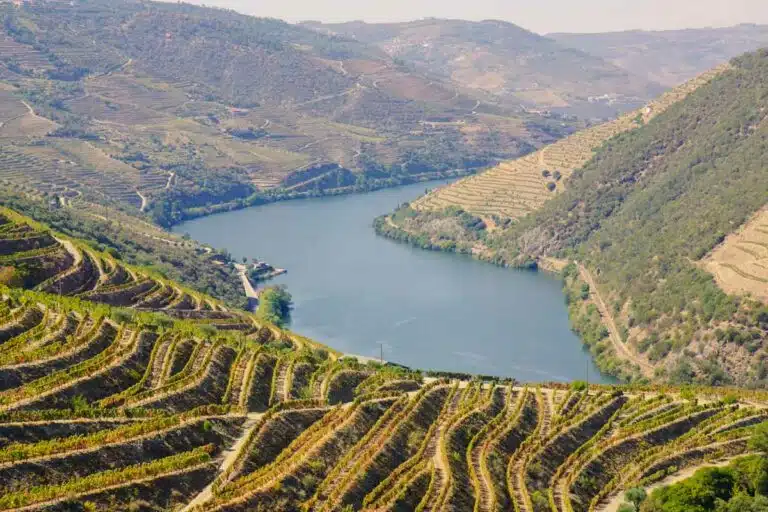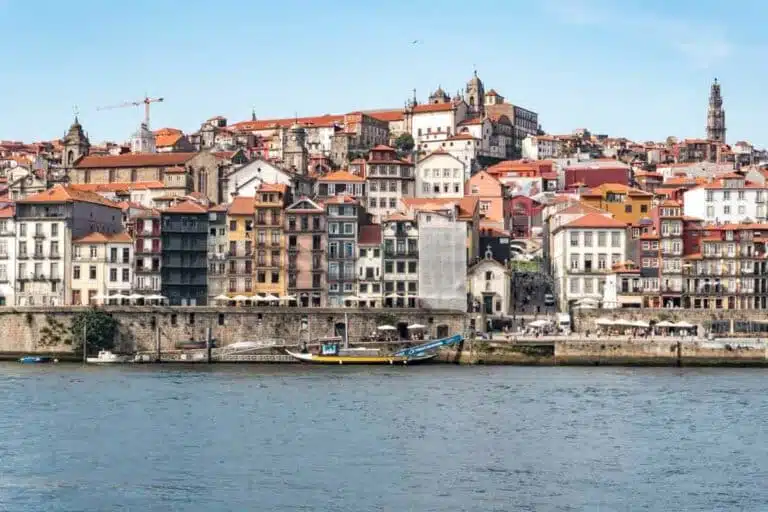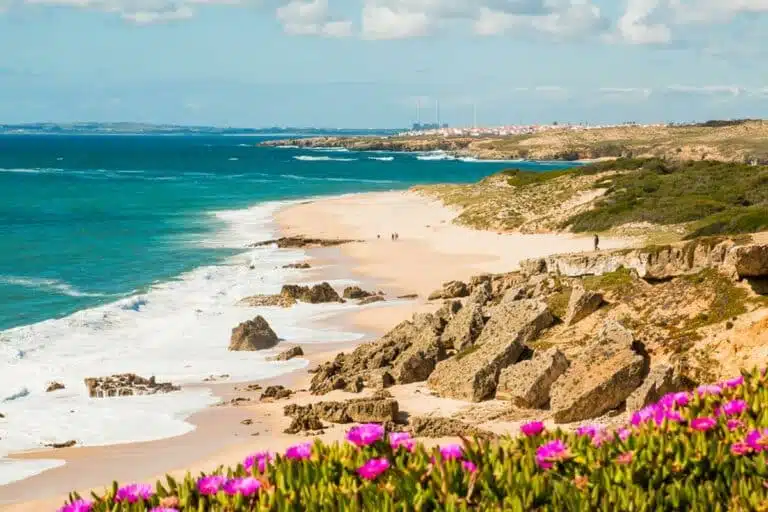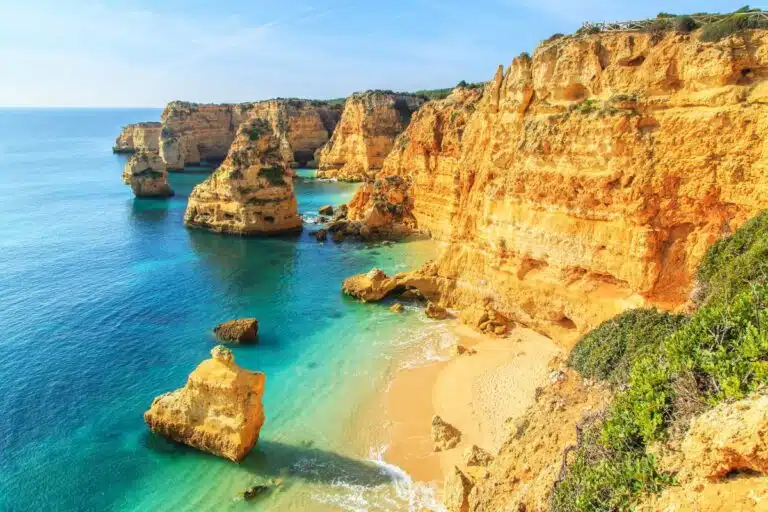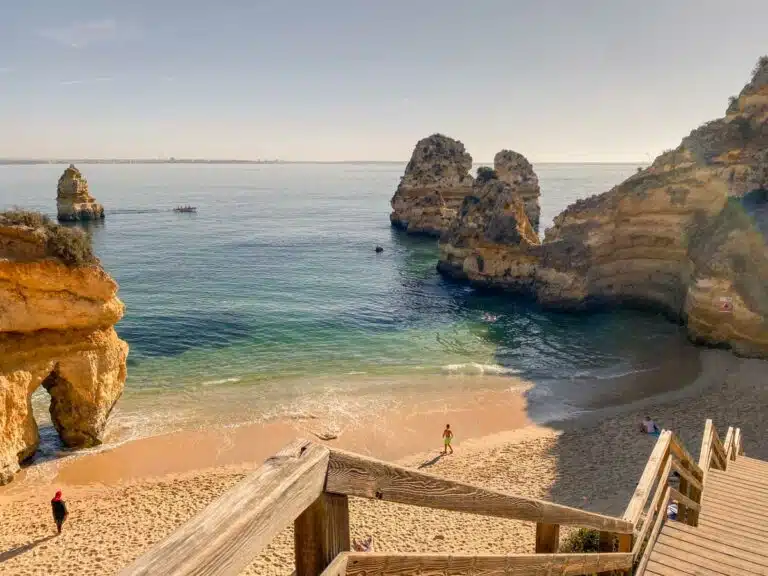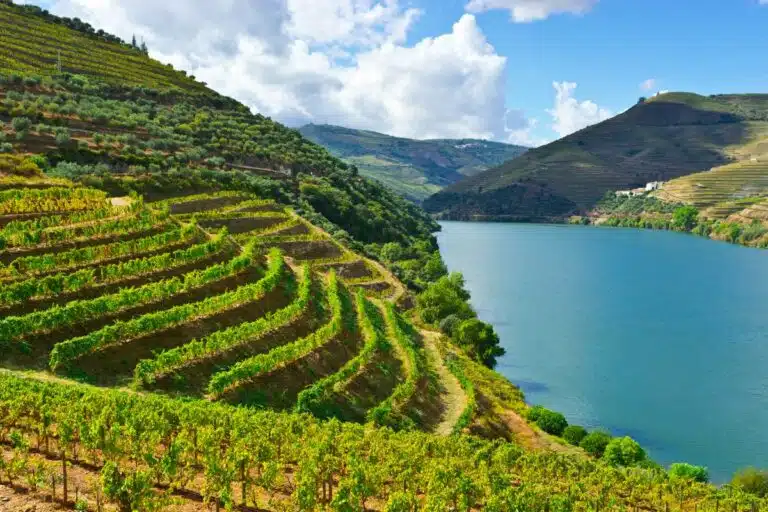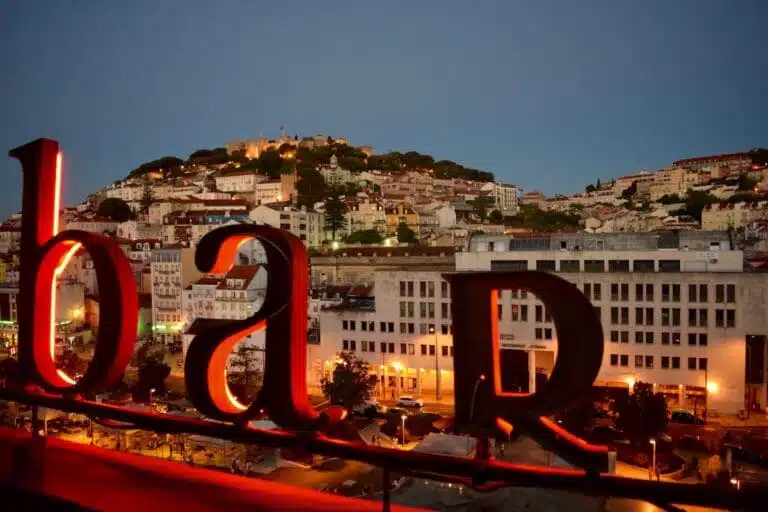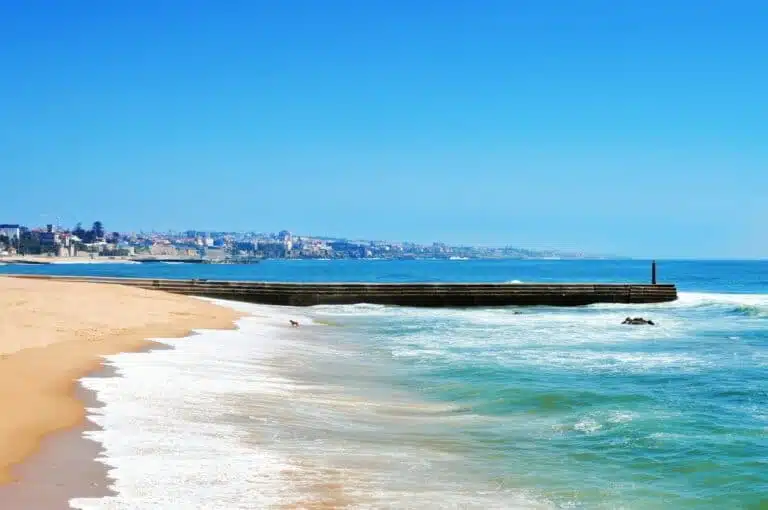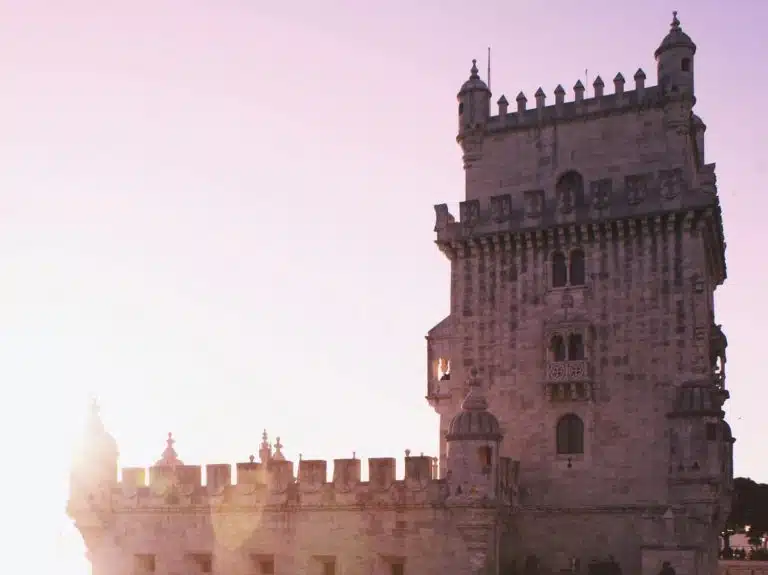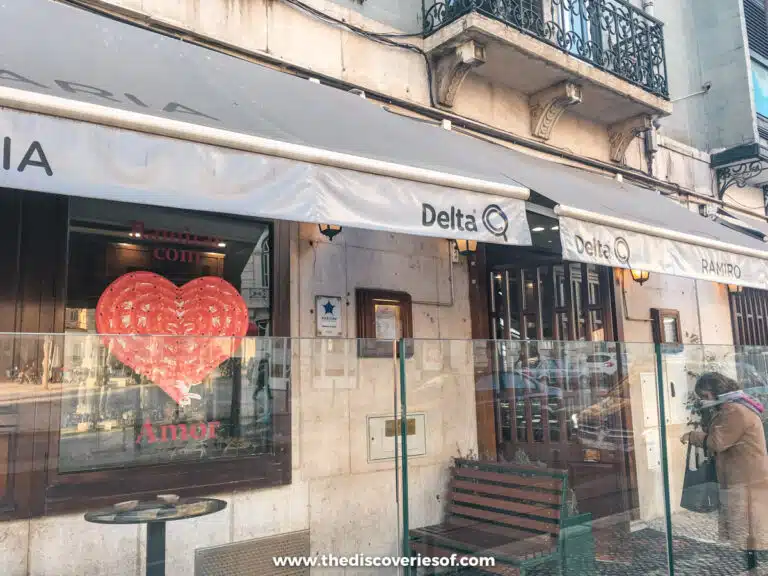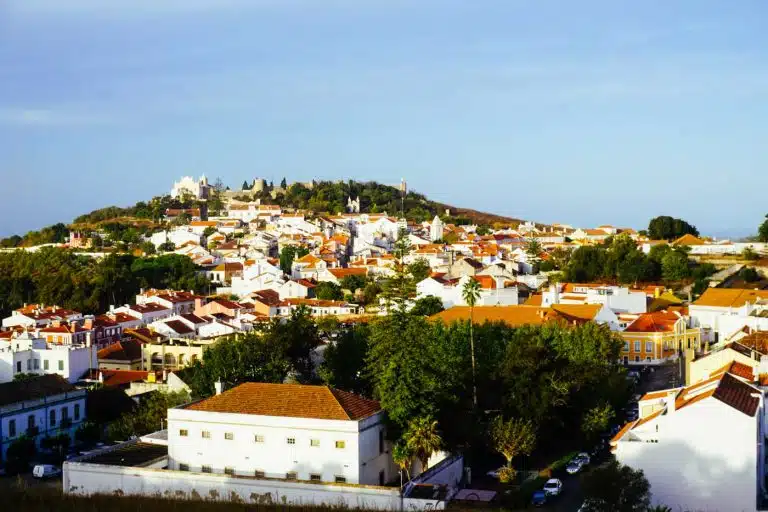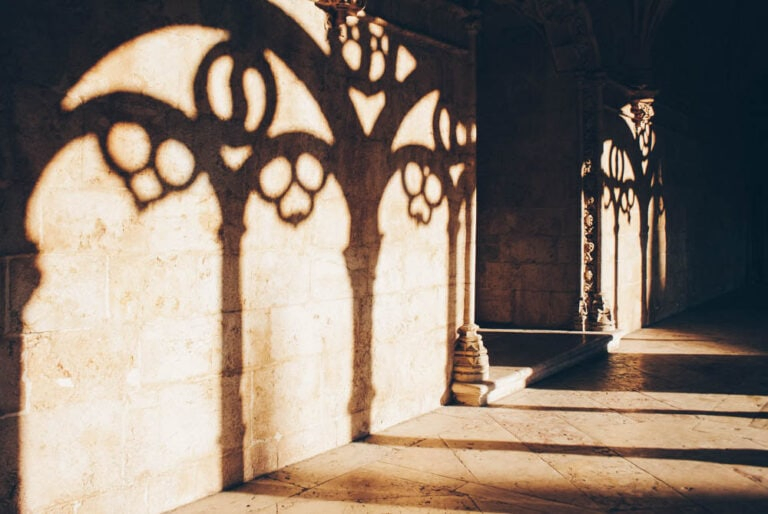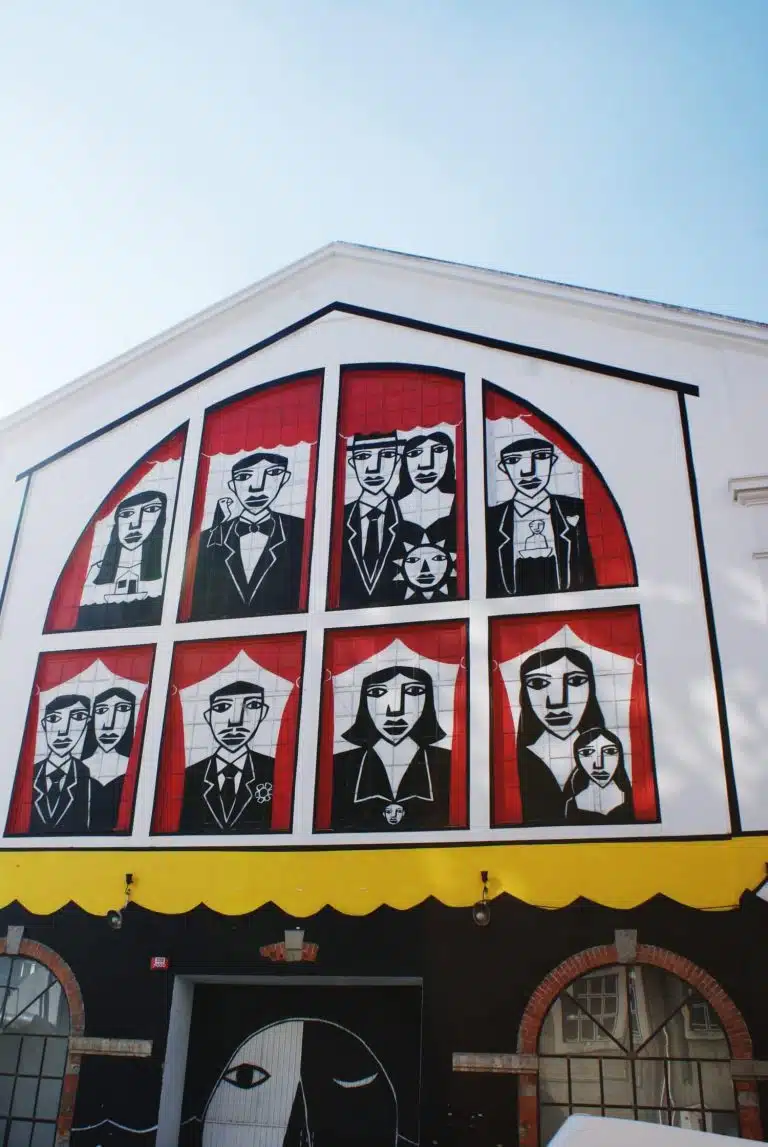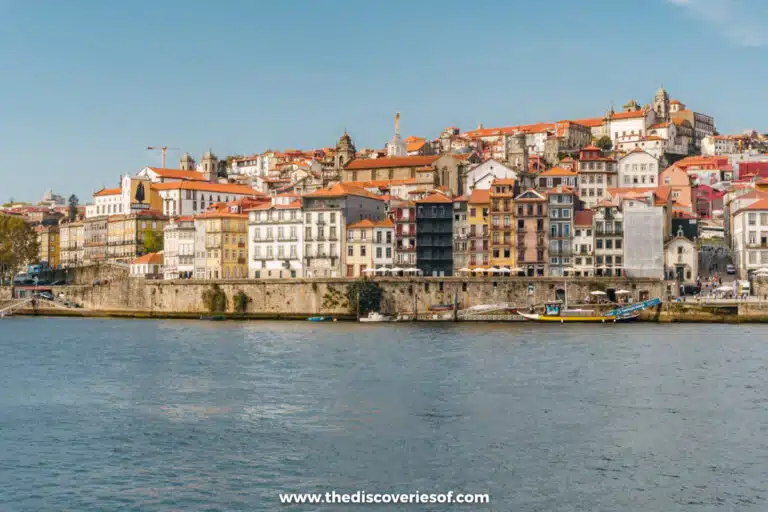
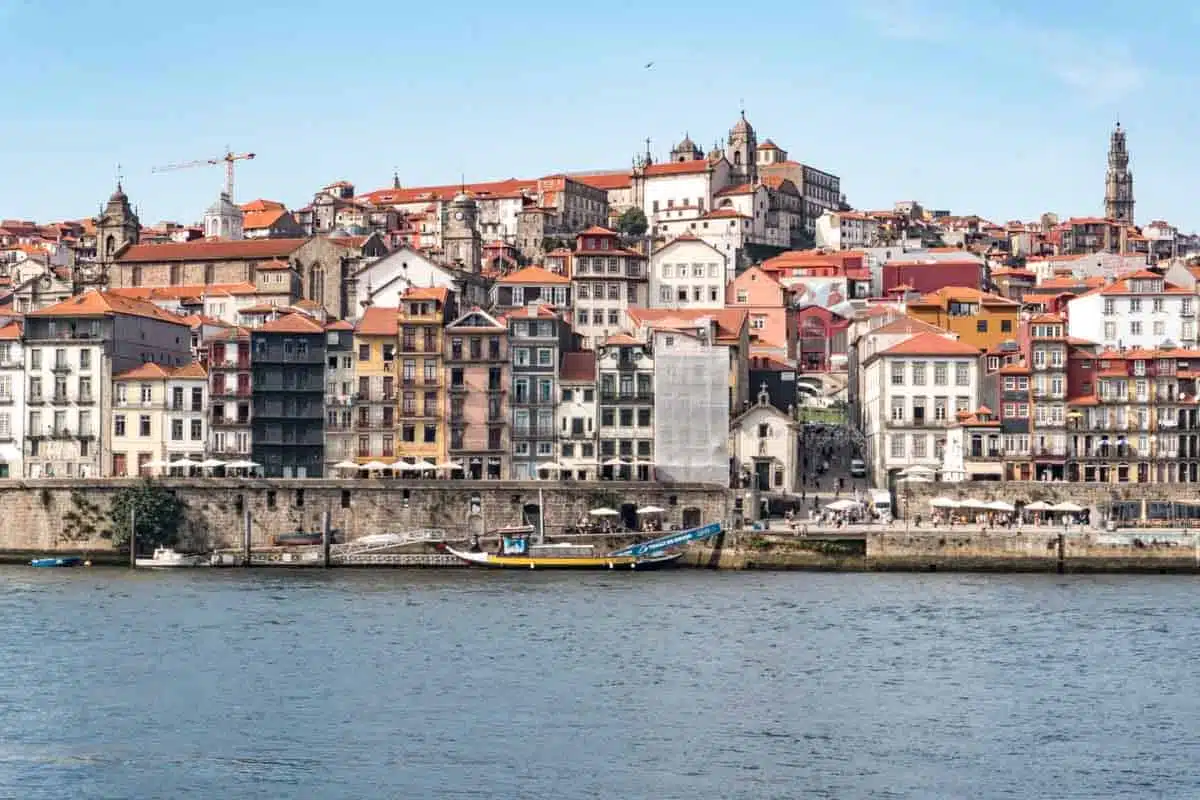
Portugal Travel Guide
Picturesque seaside bluffs, sandy coves, and ancient villages along the coasts give way to historic wine regions, mountain hikes and lively cities… There’s a lot to love about Portugal. Explore the country with this Portugal travel guide.
The first time I travelled to Portugal, I couldn’t stop telling my friends about the friendly locals, incredible seafood, vibrant nightlife and medieval architecture in Lisbon and Porto.
Then I began exploring outside the cities. Lazing on sunny beaches framed by sapphire seas, cycling around family-run vineyards and learning about traditional Portuguese crafts – any trip to Portugal is exactly what you make of it.
Starting with Sintra’s majestic castles and gardens, the beaches in the Algarve and the fabled wine region of the Douro Valley – let’s just say that I was smitten.
Fast forward a few (too many) years, and I’m still talking about Portugal to anyone paying attention because it truly is that place. Whether you plan a day trip from Lisbon or want to trek through the mountains and valleys inland, there’s no doubt you’re in for a treat.
Here’s my Portugal travel guide to help you explore one of my favourite countries.
How to Plan a Trip
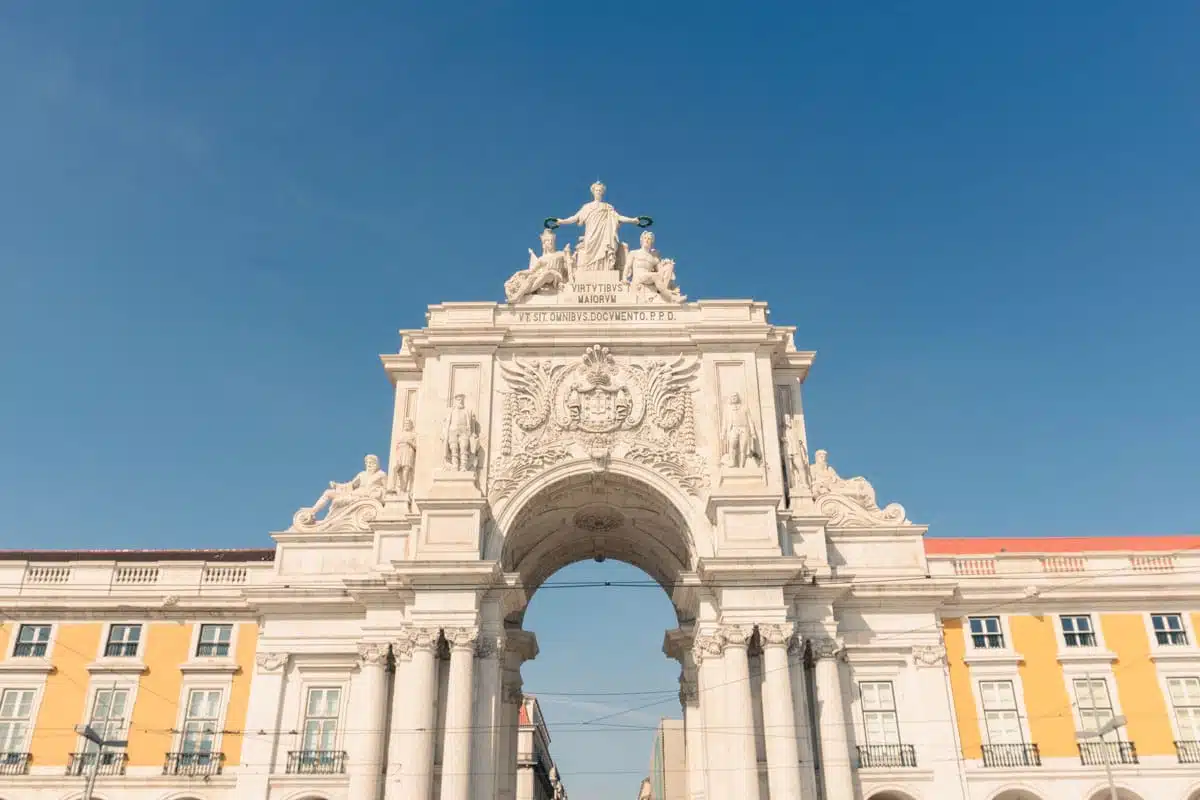
Best time to visit
The best time to visit Portugal is May to September, but there are a few exceptions on my Portugal visitors guide.
Lisbon – I like visiting Lisbon in September and October when many business owners return from the summer holiday.
Alentejo – It’s best in the spring and fall to avoid extreme temperatures inland.
Madeira – Winter is a perfect time to hike and sightsee in Madeira.
Handy Resources
- Skyscanner for Flights to Portugal, Madeira, and the Azores
- Compare Rental Car Prices in Different Areas of Portugal with Holiday Autos
- Find the best Bus Fares and Information for Portugal Travel on Flixbus
- Omio is a great Portugal Travel Resource for Trains, Buses, and Flights
- RailEurope for Trains Around Portugal During Your Stay
- Airport Transfers for Portugal Airports and Hotels on Booking.com
- G Adventures for Multi-Day Guided Trips in Portugal
- Plum Guide for Beautiful Vacation Homes in Portugal
- CP – Comboios de Portugal is a Local Train Operator in Portugal
Where to Stay
Lisbon
The architecture and history at places like Castelo de São Jorge and Belém, combined with incredible restaurants and rooftop bars make Lisbon a must-add when travelling in Portugal. Bed down at the luxurious Memmo Príncipe Real.
Porto
Mediaeval architecture, towering bridges, and enough amazing restaurants and wine bars for a lifetime make Porto a favourite in Portugal. The Yeatman has a massive wine cellar, individually designed rooms, and a 2-Michelin-starred restaurant.
Madeira
For the rocky cliffs of the Pico to Pico trail and lush forests, waterfalls, and levadas at Caldeirão Verde, head to Madeira. Stay at The Cliff Bay right on the Bay of Funchal.
Alentejo
Want one of my best Portugal travel tips? Stay in the Alentejo. Visit remote villages like Azenha do Mar and learn about fishing or the iconic azulejos from crafty locals, or hike the iconic Fisherman’s trail. Stay at the hidden gem Herdade Do Freixial near the Mira River.
Packing For Your Trip
Packing for your Portugal trip? Don’t forget…
- Bring your swimsuit, sandals, and a travel beach towel.
- Copy of your passport or ID to carry with you as required by law.
- Osprey Daypacks are excellent for day trips to the beach or hiking trails.
- Comfortable sneakers for everyday sightseeing.
- A Hydro Flask for hot summer days.
Travel Insurance
I admit the first time I went to Portugal was many years ago, and travel insurance wasn’t on my radar. Times have changed.
Anytime I visit another country, I use AXA Travel Insurance to cover unexpected medical expenses, lost luggage, and trip delays.
Suggested Guidebooks
- Lonely Planet – Insider tips on things to do in Portugal.
- Moon Portugal – In-depth guide on Portugal, Azores, and Madeira.
- Michelin Green Guide – Where to eat, drink, and stay with Michelin star ratings.
Plan your next great travel experience!
Sign up for insider tips straight to your inbox.
Portugal Visitor Guide: What to Do During Your Portugal Trip
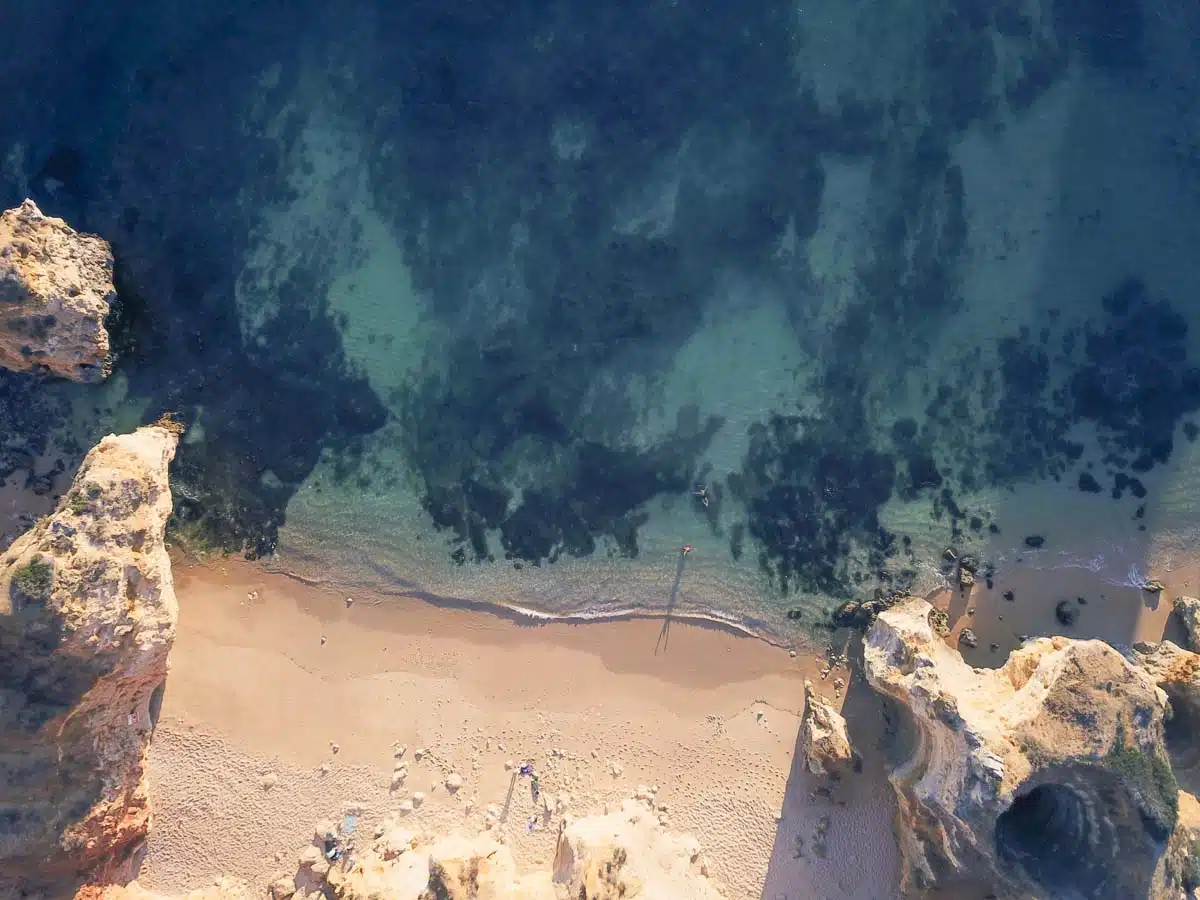
Top Things to Do
Spend Time Exploring Lisbon
Lisbon is the capital city that is at the top of everyone’s European bucket list. There’s a ton to see and explore – but unlike other capitals (ahem London, I’m looking at you) it’s retained a distinct charm and atmosphere that you simply can’t find anywhere else.
The beautiful area of Belém is the place to start – largely untouched by the 18th-century earthquake that razed much of Lisbon’s centre to the ground, it boasts a wealth of must-see attractions.
The Jeronimos Monastery, Belém Tower and Monument to the Discoveries are Belém’s big three – see them all during the course of one day, fuelled by yummy pasteis de nata from Pasteis de Belem.
Get lost in Lisbon. Really. It’s how I discovered the charming tile shop Cortiço & Netos, street art at LX Factory, and sleeper restaurant pick Paráguas Bar Tapas e Petiscos.
Allow time for architecture and history at Jeronimos Monastery and Praça do Commercio, too.
Delve into History in Porto
Porto is Portugal’s second largest city but shouldn’t be your second choice. Dotted with vibrant colourful buildings sitting atop winding streets, it offers visitors the chance to delve into the distinct culture of northern Portugal
Visit Palácio da Bolsa and Bolhão Market in Porto, then marvel at the Moorish influences of the azulejos inside the Cloister of the 12th-century Porto Cathedral before walking across the iconic 19th-century Dom Luis I Bridge.
Wine Tasting in Douro Valley
Head to Douro Valley to visit the world’s first (not to mention one of its most stunning) wine regions. The Douro Valley might well be my favourite spot in Portugal. The Douro River winds its way through the valley, framed by steeply terraced hills on each side – it’s almost too picturesque to be real.
Occupy yourself by hopping between the hundreds of wineries and port houses that call the Douro their home. Stop by Quinta do Bomfim and Quinta de Santa Eufémia or take a guided tour.
Once you’re done exploring the vineyards (perhaps with a bottle or two stashed in your bag to bring home), finish up with lunch in Rui Paula’s esteemed DOC restaurant. Set on a terrace over the river I cannot recommend it enough – the food is divine, as is the setting.
Gorgeous Beaches in the Algarve
Cast away all your preconceptions – there’s so much more to the Algarve than the pristine golf courses and flashy marinas for which it’s best-known (though of course, there are plenty of those to go round).
Of course, the beaches are spectacular. Like, really. Think crystal-clear waters, picturesque cliff sides and hidden sea caves. Praia da Coelha is one of the best-known but there are almost endless numbers to choose from.
Take a ferry to my favourite sandy beach (Praia da Barreta) on the private island of Ilha Deserta. Or, stick to more popular choices like Praia da Marinha and Praia do Camilo, which are famous for good reason.
Read my in-depth guide to the best beaches of the Algarve here.
Kayak to Benagil Cave
Up for a little morning cardio when travelling to Portugal? Why not… Hire a kayak and head out to Benagil Cave.
Chill out and enjoy the rolling waves and sunshine splashing in through the ancient opening above the towering limestone walls.
Read about how to get there and where to stay in my Benagil Cave guide.
Go Island Hopping
One of the best tips for Portugal travel? Visit the islands. The Azores and Madeira are short flights from the mainland and offer incredibly scenic holidays.
In Madeira be sure to hike the levadas and Pico to Pico trails. Or head to the Azores and photograph the hydrangeas on Faial Island or hit the beaches of São Miguel.
Tour the Castles and Ruins in Sintra
If you’ve ever seen those photos of storybook castles in Portugal, chances are a few are from Sintra.
Make a day trip or take a guided tour to discover the gorgeous gardens, labyrinths, and ancient fortresses in spots like the Palace of Pena, Castle of the Moors, Gruta del laberinto, and Quinta da Regaleira.
Madeira
Madeira has become a must visit destination in Portugal. Who can resist the temptation of the Christiano Ronaldo Museum for starters?
Less tongue in cheek – Madeira is brimming with epic hikes, tasty food and, of course, Madeira wine. Speaking of which, swing by the Madeira Wine Museum – based in a house that was once owned by Christopher Columbus.
Suggested Portugal Itineraries
Northern Portugal
7 – 10 Days
Braga – Porto – Arouca – Coimbra
Eat amazing food in Braga and Porto, trek the Paiva Walkways in Arouca, and explore the Joanina Library and Old Town in Coimbra.
Mountains, Valleys and Vineyards
2 Weeks
Douro Valley – Serra da Estrela Nature Park – Parque Natural da Serra de São Mamede
Visit the world’s oldest wine region, Portugal’s largest area of protected land, and a hidden gem in the Alentejo.
Read more in my travel guide to Portugal’s Douro Valley.
Beaches in the Algarve
2 Weeks
Tavira – Olhão – Faro – Loulé – Albufeira – Lagos
Flop and drop in the sun, then explore some of my favourite towns in Portugal, including Tavira and Loulé.
Lisbon to the Alentejo
10 – 14 Days
Lisbon– Évora – Comporta Santiago do Cacém – Azenha do Mar – Santa Clara-a-Velha
Learn more about my 5 secret Alentejo travel spots.
Hidden Portugal: Off the Beaten Path
Historical Way Rota Vicentina
If you want to discover one of the best hikes in Europe, set out on the Historical Way Rota Vicentina.
Rather than the more popular Fisherman’s Way, the Historical Way plunges you into the heart of inland Alentejo – giving you a snapshot into Portugal before the tourists and trendy spots along the way.
Explore the Villages in Alentejo
The Alentejo is the hidden gem when travelling Portugal. Visit Azenha do Mar for friendly locals and fresh seafood pulled up from the unforgiving shores at A Azenha do Mar.
Learn more secret travel spots in the Alentejo here.
Thermal Spas at Vidago Palace
Vidago Palace has a long history of luxury, relaxation, and some pretty amazing thermal spas.
Due to the picturesque location on the border of Spain, the famous golf course, and a spa featuring thermal pools known for their healing properties, it’s no surprise you’ll find it on most Portugal travel guides.
Serra da Estrela Nature Park
Ski the tallest mountains in Portugal at Serra da Estrela Ski Resort, photograph Covão dos Conchos, and hike near the Glacial Valley of Zêzere, or Passadiços do Mondego.
Wondering how to visit Portugal’s hidden gems? Go with a Portugal tourism guide like this one, or on your own adventure.
Explore Tavira
If you’ve read my Portugal travel blogs, you know about the Algarve.
Tavira charms with its pedestrian-friendly Roman bridge, mediaeval Castelo de Tavira, and beaches like the Anchor Cemetery (Barril) and Cacela Velha Beach.
How to See the Best of Portugal for Free
Want a Portugal travel guide on the cheap? I got you covered.
Take a free walking tour of Sintra with GuruWalk you’ll learn the rich history and folklore along the hills, gardens, and architectural marvels on this day trip from Lisbon.
You can also set off on your own and stumble on free hidden gems like Castelo de Tavira or the Anchor Graveyard at Praia do Barril in the Algarve.
Dishes to Try in Portugal
Tomato Rice – Similar to risotto but made with Carolino rice, garlic, tomatoes, and broth.
Bacalhao – Dried and salted cod that shows up everywhere in Portugal.
Pastel de Nata – An egg custard tart made famous at Pastéis de Belém.
Piri Piri Chicken – Grilled or roasted chicken seasoned with spices, herbs, and oil.
Top Drinks in Portugal
Port – Fortified wine commonly served after dinner.
Map of Portugal


